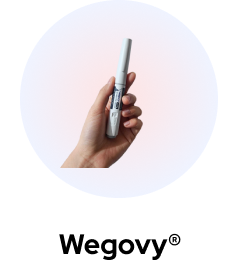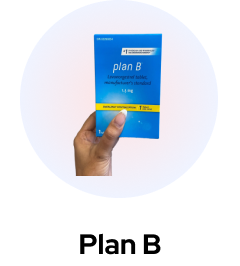Choosing a Birth Control
The goal of birth control is to prevent pregnancies from occurring. Each individual will have their own preference for what method they want to use and there is no best treatment. Factors that will affect this choice are fertility plans, age and lifestyle. It is worth noting that some birth control options do not prevent STI transmission so females should be screened for STIs and have a pregnancy test before going on contraception.
In terms of birth control there are many different options to choose from. There are methods that act as a barrier such as condoms (male or female), sponges, caps and diaphragm. Each of these with their own unique mechanism for preventing pregnancy. There is also an option of sterilization, which is a method of permanent birth control and can be done on either males or females (vasectomy or tubal ligation respectively). There are many methods in terms of mechanisms to prevent pregnancy. For instance, the releasing of eggs can be prevented, sperm can be damaged, uterus lining can be modified as well as the cervical mucus can be thickened. Deciding what option to take depends on what the purpose is of the contraception. If it is temporary there are short term options that will last only for a short duration. If the intention is long term, then there are many options that act for a longer duration (years). Permanent options also exist when woman make up their mind of never getting pregnant in the future. Personal factors are important since some methods are more complicated than others. Some options have certain benefits in some areas and have drawbacks in other areas. The individual using the birth control needs to decide on what treatment best satisfies their goals moving forward with birth control. One aspect often forgotten is what the partner wants in terms of birth control with respect to their own goals. It is important to make a choice that satisfies both partners to further reinforce the relationship.
Background Statistics on Pregnancy
Pregnancy can occur in a woman between the duration of puberty to menopause. In Canada alone, there were 386,044 births and 82,869 abortions in 2013 to 2014. When looking at statistics in the United States, there were 45% pregnancies that were unintended and the age group most affected by this was from 20-24 years. Statistics show that half of these pregnancies will end in abortion. This is a lot since 6 million women get pregnant each year.
Menstrual Cycle
It is important to understand how the menstrual cycle works when planning on using birth control. The average menstrual cycle last 28 days (21-40 days). The first phase is the follicular phase, second phase is ovulation (which occurs at day 14) and the last phase is the luteal phase, and this will continue to occur till the next cycle starts.
Treatment Options:
Assessing if Combined Hormonal Contraception (COC) Is Safe For you
First option we will cover is combined hormonal contraception. Before we discuss what this is, it is important to note the following contraindications (instances where it should not be used). These include Breast cancer, cerebrovascular disease, heart disease relating to the valves, history of venous thromboembolism/pulmonary embolism, history of heart attack, blood pressure that isn’t controlled, pregnancy, less than 6 weeks after giving birth if currently breastfeeding, migraines with aura, liver conditions (cirrhosis), smoking greater than 15 cigarettes/day at an age over 35years old. There are several more not mentioned here. There are two types of COC (combined Hormonal contraception) such as monophasic and triphasic but there is not much difference between them in terms of effectiveness or bleeding patterns. One benefit of monophasic over the triphasic is that it is a lot easier to manipulate the dose if needed to in the future.
Before beginning hormonal contraception, it is important to assess the risk. For instance, hormonal contraception can increase the risk of stroke, heart attacks and breast caner. These risks are higher when someone gets pregnant. One perspective is hormonal contraception is preventing a woman from acquiring the higher risk of getting these conditions associated with pregnancy so the benefits would outweigh the risk in that sense. Using hormonal contraceptives will lighten menstrual flow as well as keep cycles under control. Hormonal contraceptives come with side effects such as headaches, breakthrough bleeding and nausea. These symptoms should go away in 3 to 6 months so individuals should not worry too much. It is important to understand that hormonal contraception does not protect people from HIV or STDs. The most effective option to protect an individual from those sexually transmitted diseases is a latex condom.
Introduction to Oral COC Options Available
One of the 2 active ingredients in COC is ethinyl estradiol. The usual effective dose range is 20-25mcg and this range will prevent majority of pregnancies from occurring. Some low dose options such as Lolo are also available that have a dose of 10mcg and females might choose this option to decrease the amount of side effects. Side effects that will be reduced with Lolo include bloating and breast tenderness. Unfortunately, with the low dose the bleeding patterns will be more abnormal since the ethinyl estradiol dose is lower.
In terms of pack size, the usual pack of COC has 21 or 28 tablets inside it. The 21 tablets in either case have active medication in it whereas the 7 extra tablets have no medication in them. Females can choose to take 7 placebo (non medicated) tablets after a 21-day course or choose to have a 7-day gap as done with the 21-tablet pack.
The second component of these COC formulations is progestin. There are various types of this in different COC products. For instance, the third generation progestins (norgestimate and desogestrel) have been used for acne because they have a trait of being less androgenic than other progestins. This characteristic of being less androgenic contributes to treating acne.
It Is important to understand what drugs interact with birth control medication since they may affect its effectiveness. Two classes of medications that should be actively assessed for during birth control treatment is antibiotics and antiepileptic drugs. If these medications are present in someone’s medication regimen then they should decide on taking a non oral formulation of birth control such as IUD, barrier contraception or depot injections.
Vaginal Ring
There are fortunately other formulations for hormonal contraception that can be used when the oral route is not an option. For instance, there is a product called NuvaRing and this is used as a vaginal ring. This will release hormones constantly throughout the day. One benefit of this is that it will prevent the fluctuations that are typically seen with oral medication. Another benefit of this route is that it can be given in much lower doses since this route does not result in the medication being broken down in the GI system. The Ring is also not an issue during sexual intercourse and can be continued to be used.
Transdermal Patches
If vaginal rings are not preferred there are other non oral formulations such as transdermal patches called Evra. Compliance is better with the patch relative to the tablets. Patients over 90kg should consider another option since this may not be as effective for them.
Progestin-Only-Contraception
If estrogen is the issue, then there are options of only progestin contraception. Oral formulation of this would use norethindrone and the brand name is micronor. This option is especially beneficial for those individuals who cannot tolerate estrogen or manage its side effects. The mechanism progestin-only-contraception uses to prevent pregnancy is by preventing sperm from reaching the cervix by thickening the cervical mucus. One of the draw backs for this regimen is of course the dose cannot be missed by more than 3 hours and needs to be taken at the same time every day. The cervical mucous that was thickened starts to go back to normal after 22 hours of the last dose, so it is very important to adhere to the treatment to prevent a pregnancy.
Progestin Depot Injections
There is another option called progestin depot injections. Side effects of this may include amenorrhea (no menses) which people may prefer. Other side effects that may not be that favorable are irregular bleeding, weight gain, bloating or mood swings.
IUD
Moving towards devices now, there is an option called an IUD. This is inserted into the uterus and it will release a low dose of medication constantly and could last up to 5 years in some cases to prevent pregnancy. There is a high risk it will be expelled out in younger woman relative to older women. The ideal situation would be to always carry back up methods of contraception if the IUD is expelled from the uterus. The draw back to this method is, woman need a visit to the doctor when initiating and discontinuing.
Emergency Contraception:
Levonorgestrel
Moving on to emergency contraception, a single dose of levonorgestrel (1.5mg) is enough to prevent 95% of pregnancies within a 24hr duration after unprotected intercourse. This pill can fortunately be taken up to 5 days after unprotected intercourse but its effectiveness in preventing pregnancies decreases every day that passes. Levonorgestrel may not be effective in women who weigh over 80kg. these women can still use it as it may still provide benefit. If they do not want to use levonorgestrel they have the option of using a copper IUD for emergency contraception.
Ulipristal Acetate
Another alternative to levonorgestrel is a medication called ulipristal acetate 30mg. studies have shown that they both have similar effectiveness when tested within a 72hrs interval after unprotected intercourse, but ulipristal has shown more benefit after that interval. Also, ulipristal has proven to be more effective for overweight patients compared to levonorgestrel.
Copper IUD
The most effective option for emergency contraception for unprotected intercourse is a copper IUD and this can work up to 7 days after the incident. The exact mechanism is unknown but it is hypothesized it prevents pregnancies by preventing the implantation of the embryo into the uterus. A benefit to this method is once inserted it can be used for continuous contraception onwards.












 (US)
(US)